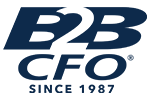
The Coming Small Business Exodus
Posted on May 21, 2012 by Shane Campbell
You’ve heard the statistics. Somewhere between 8 and 10 million small U.S. businesses owned by baby-boomers will come to market over the next ten to fifteen years. That sounds like a buyer’s market to me. That is why it is also predicted that less than 20% of these companies are expected to have a successful exit. So how will you be the one in five to exit successfully? How will you stand out among the crowd?
The best place to start is with the end in mind, looking at it from a buyer’s perspective. Here are some red flags that a prospective buyer will notice. They will likely keep your business from selling, or diminish the eventual selling price:
- You have individual customers that that make up 10% or more of total sales. This adds to the risk assumed by the buyer, thereby reducing the amount they will buyer will pay for your business.
- Poor or non-existent sales growth. A buyer wants a company that has upside potential, not one that has peaked.
- No new products on the horizon. Most products have a life cycle. If the business is not positioned to take on new products, then the prospective business buyer will heavily discount future cash flows from the older products, and thereby reduce the price he is willing to pay you.
- Executive staff that will need to be replaced by the buyer. Do you have the right people in high level executive positions? If you have under-qualified or underperforming individuals in these positions, they will cost you money when it comes time to sell the business.
- The selling price of your business will be discounted if you as the business owner can’t take significant time off. The business is not worth much, as logic has it, since you run the whole show and won’t be around after the sale.

- Deferred maintenance on the building and/or equipment. Every business, like real estate, must have curb appeal.
- Poor accounting systems. When buying/selling, it really is all about the numbers. If you can’t prove out the numbers, the prospective buyer will likely move on to another acquisition prospect.
- An unreasonable selling price expectation. Historically, most companies sell for 3x to 5x the adjusted cash flow of the business, less debt.
Fortunately, these shortcomings can all be fixed, but you have to have a plan. A good long-term exit plan will address the challenges above, as well as tax and financial planning objectives. Check out the six-step process so you can be the one in five to successfully exit your business.

